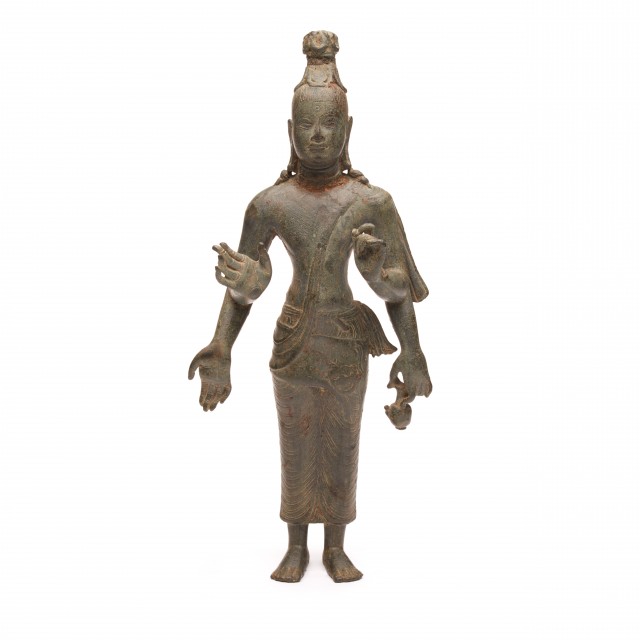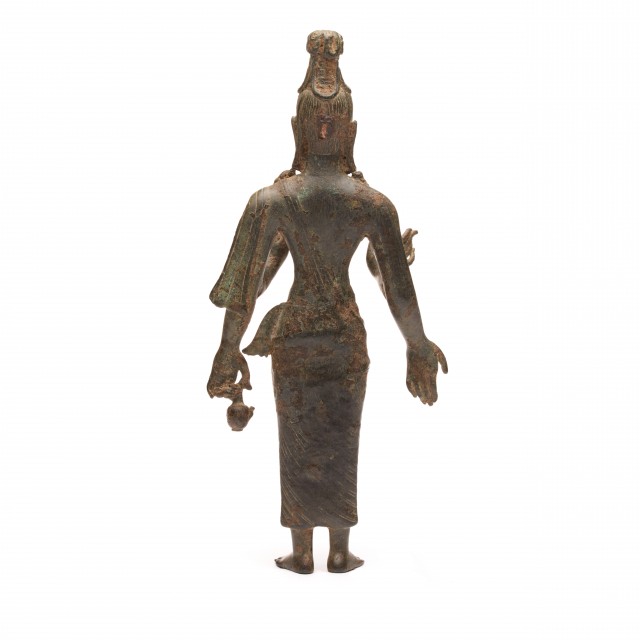
Bodhisattva (Four-armed Lokeshvara, Avalokiteshvara or Maitreya)

Photography by Synthescape, Digital image © Asia Society

Photography by Synthescape, Digital image © Asia Society
Bodhisattva (Four-armed Lokeshvara, Avalokiteshvara or Maitreya)
7th-8th century
Sri Lanka
Copper alloy
H. 8 3/4 x W. 4 x D. 2 in. (22.2 x 10.2 x 5.1 cm)
Asia Society, New York: Mr. and Mrs. John D. Rockefeller 3rd Collection, 1979.41
Licensing inquiries
This four-armed figure represents an unknown ascetic bodhisattva. Although the spouted bottle held in this figure's hand is an attribute of both Avalokiteshvara and Maitreya, the absence of a symbol in the headdress hinders positive identification. There are two main characteristics which point to his representing an ascetic bodhisattva: he wears no elaborate jewelry and an animal skin is wrapped around his waist. The prevalence of bodhisattva-ascetics in the art of India during the 4th through 6th centuries and subsequently in Sri Lanka and Southeast Asia in later centuries reflects the movement of particular forms of Buddhism and related imagery along the trade routes. Many trading ships either stopped at Sri Lanka on their way east or originated there, so it is not surprising that a statue similar to this one was found more than 2,000 miles away, on the Indonesian island of Sulawesi.


